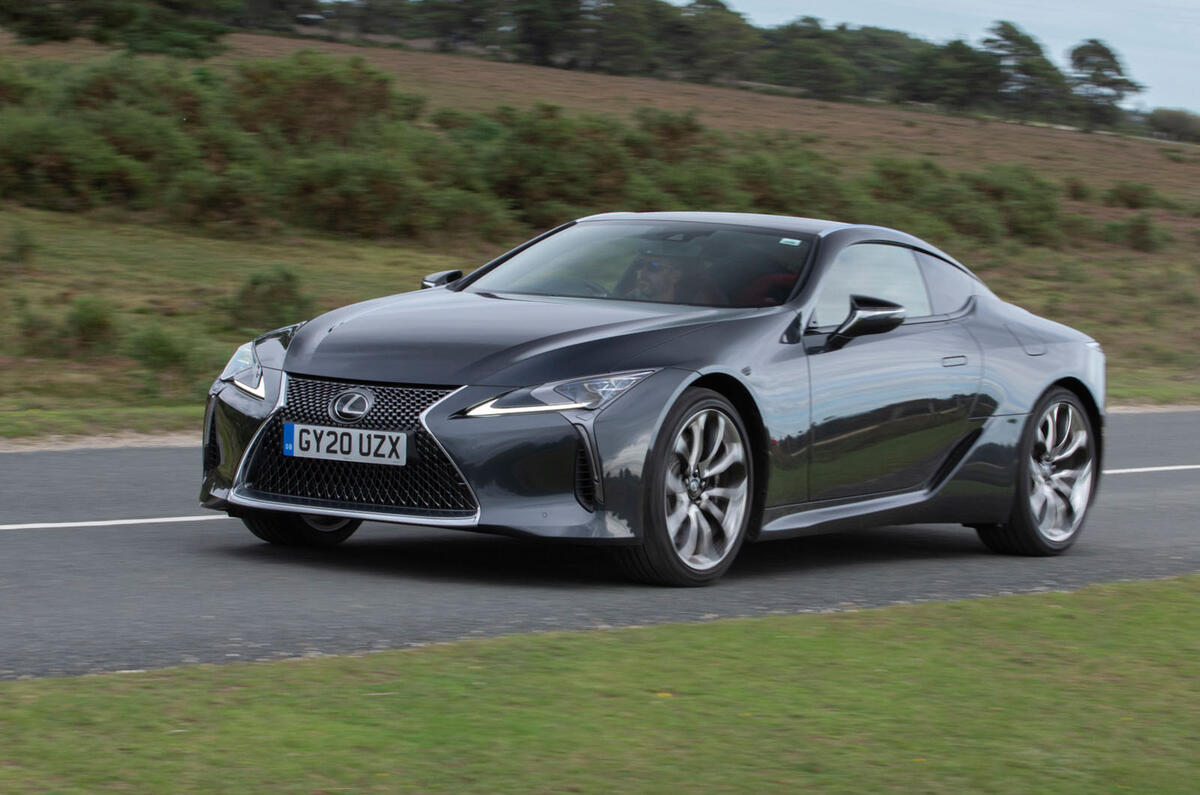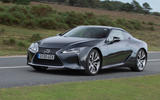What is it?
The elegant, strange and unusual Lexus LC is the kind of car you’ll notice when you see one. Can’t help but. Not quite a sports car, nor quite a muscle coupé, and in some ways not a natural GT either, it has the distinctly science-fiction-flavoured aspect of the inter-dimensional galactic time-traveller about it. Of a car somehow estranged from its natural place and context, but all the more exotic, fascinating and appealing because of it.
On sale in the UK since 2017, the LC had a significant model-year revision in 2020 when a cloth-top convertible version was brought in alongside the existing fixed-head coupé. Lexus’s atmospheric 5.0-litre petrol V8 is the only engine on offer in the new ‘LC C’ roadster, but the coupé still offers both that engine and its maker’s latest-generation multi-stage hybrid powerplant. The latter powers the car we’re testing here.
It’s a pretty complex ‘self-charging’ set-up consisting of an atmospheric 3.5-litre V6 petrol engine, two electric motor-generators, an epicyclic power-split device and a planetary gearbox even further downstream. Really, it's two discrete transmissions acting as one.
The main electric drive motor is capable of adding up to 177bhp and 221lb ft of torque into the driveline when there is enough power in the drive battery to support it and it finds its way to the LC’s rear wheels along with the piston engine’s reserves (which are worth up to 295bhp). Lexus has updated the power management and control software of the hybrid system for this version of the LC and claims the car is more responsive in real-world driving conditions as a result. ‘Total system output’ power remains advertised as it was before at 354bhp, though, and a like-for-like combined torque figure isn’t quoted.
Other mechanical changes on the LC have been focused around its suspension and steering systems and are intended to create a clearer sense of connection between driver and car, and a smoother, more linear and more responsive character to the driving experience overall. Aluminium has been used more intensively throughout the car’s multi-link axles to reduce unsprung mass, and new lightweight coil springs and hollow anti-roll bars are included, too. The car’s adaptive dampers have been retuned up front, while the lateral stiffness of its suspension has been increased at the rear. The LC’s variably geared power steering system has been recalibrated as well, and its mountings have been reinforced.
As standard, 20in alloy wheels feature, with forged 21in rims fitted to upper-level Sport and Sport+ models. However, all of those rims now come with conventional performance tyres instead of the run-flats that early versions of LC had. Wander all the way up to top-level Sport+ on the car’s trim-level ladder, meanwhile, and your LC 500h will also get four-wheel steering and a Torsen rear differential – just as a like-for-like LC 500 V8 would. However, our test car was a mid-spec Sport example without either.











































Join the debate
Add your comment
Japanese designs at the moment seem to be the most edgy and interesting. Really like the look of this.
So basically a superb grand tourer then (As Scout says below). Comfy for the 98% of motorway miles and traffic on the way to the Cotswold hotel, yet fun enough for the 2 miles of A road at either end and looking cool yet different when you arrive! I'm very tempted to get a 2 year old V8 version.